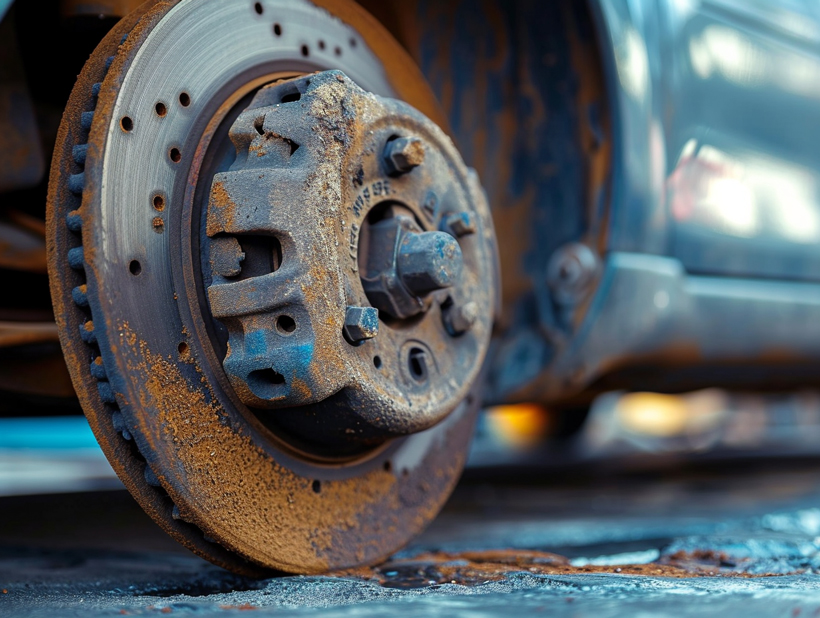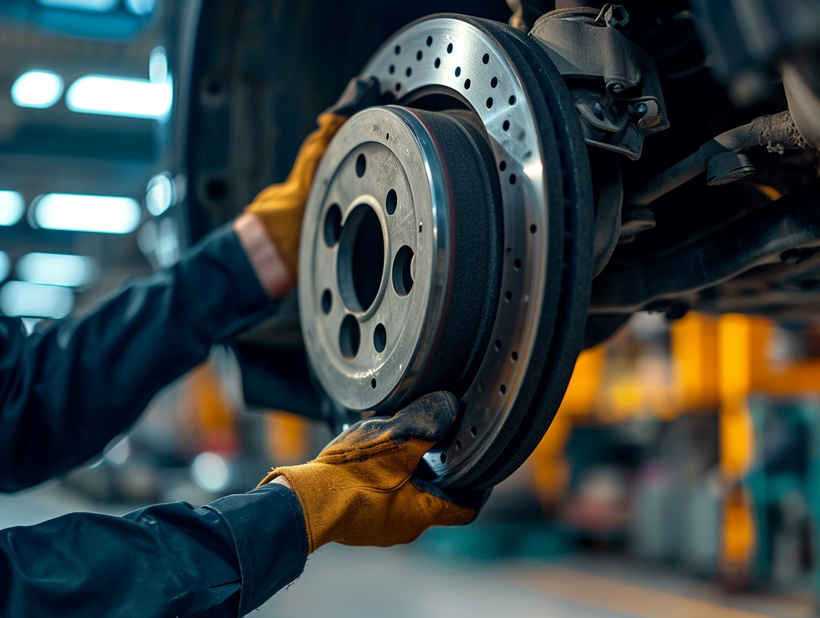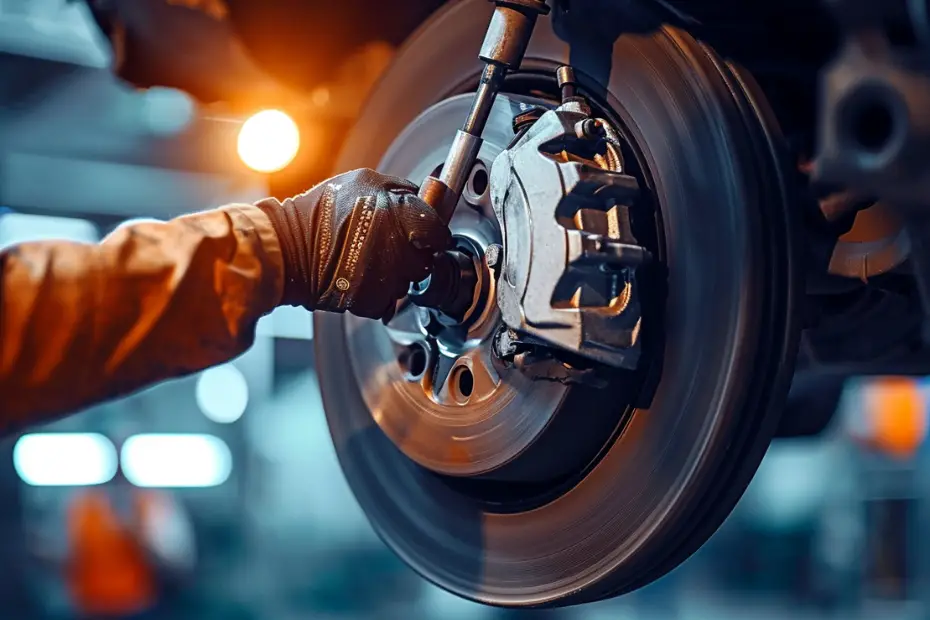Ever been cruising down the road when suddenly your car starts serenading you with the high-pitched chorus of squeaking brakes? It’s not just you‚ it’s a common symphony heard by drivers everywhere. I’m here to decode this annoying automotive aria and shed some light on what those squeaky brakes might be trying to tell you.
Squeaky brakes can be the first hint of a potential issue lurking in your vehicle’s brake system. From worn-out brake pads to a lack of lubrication, the causes are numerous, but don’t worry‚ we’ll guide you through the possible culprits. Understanding the why behind the squeak is the first step to a quieter ride and, more importantly, a safer driving experience.
Stay tuned as I dive into the common reasons behind brake noise and how to address them. I’ve got the insights you need to ensure your car stops as smoothly as it goes‚ ans the squeak.
Common Causes of Squeaky Brakes
One of the most frequent issues I come across in vehicle maintenance is the problem of squeaky brakes. This noise can stem from several sources, ranging from normal operations to clear indicators of malfunction. Understanding these causes is crucial for diagnosing the issue accurately.

Worn Brake Pads
The friction material on brake pads wears down over time. Worn-out brake pads are the leading cause of brake squeaking. Most brake pads have small metal wear indicators that emit a high-pitched noise when it’s time for them to be replaced. This noise is intended as an audible warning that cannot be ignored.
Glazed Pads and Rotors
Excessive heating and cooling cycles can lead to a smooth, hard surface on the pads and rotors, known as glazing. Glazed pads and rotors often squeak due to the loss of proper friction where the two surfaces make contact.
Vibrations Between Brake Components
At times, the squeaking comes from vibrations between different brake components. If the anti-rattle clips are missing or brake parts become loose, vibrations can occur, leading to persistent squeaking during brake application.
Dirt and Debris
Brakes squeaking may also be the result of dirt or debris caught between the brake pad and the rotor. Even a small stone can cause a loud squeak if it’s situated in just the wrong spot.
Lack of Lubrication
Proper lubrication in the brake system is essential. Specific points need periodic lubrication; without it, components can rub together and produce a squeaking noise. Lubrication should be addressed during regular maintenance to prevent brake noise from cropping up.
Here’s a quick reference for some of the common causes of brake squeaking:
| Cause | Description |
|---|---|
| Worn Brake Pads | Friction material is reduced to minimum |
| Glazed Pads and Rotors | Smooth, hard surface due to heat exposure |
| Vibrations | Loose components or missing anti-rattle clips |
| Dirt and Debris | Foreign objects between pad and rotor |
| Lack of Lubrication | Inadequate greasing of brake components |
The brake system is quite complex and each aspect requires attention. It’s always better to remedy these issues promptly, ensuring safety and maintaining the integrity of your vehicle’s brake system.
Worn-Out Brake Pads
When it comes to the health of your car’s braking system, worn-out brake pads are often the culprits behind that high-pitched squeak you’re experiencing. Throughout the course of a vehicle’s life, brake pads are constantly under pressure to perform, and as they do, they inevitably wear down. It’s not just a matter of if but when they’ll need replacement.
I’ve learned that brake pads come equipped with wear indicators. These small yet critical devices are designed to emit a squealing sound once the pad material has reached a critical thickness. This sound is like an audible cue that you can‚Äôt ignore – a nudge that it’s time to have your brake pads examined and likely replaced. The concept is beautifully simple: as the pads wear down, the indicator gets closer to the rotor, and when they make contact, the squeaking starts.
To give you a clearer picture of what we’re dealing with, here’s a brief rundown of what happens when brake pads wear out:
- Braking Effectiveness Decreases: The thinner the pad, the less effective it becomes at stopping your car.
- Risk of Damage to Rotors: Metal-to-metal contact can occur if pads aren’t replaced, leading to more expensive repairs.
- Compromised Safety: Worn pads extend the distance required to stop, increasing the risk of accidents.
Monitoring brake pad thickness should be part of your regular car maintenance routine. Mechanics often measure brake pad thickness during an inspection, which helps in predicting the lifespan of your pads.

Here’s a basic guideline of brake pad thickness levels:
| Brake Pad Condition | Thickness |
|---|---|
| New | 12 mm and above |
| Healthy | 8 to 12 mm |
| Wear Warning | 3 to 4 mm (time to replace) |
| Unsafe | Less than 3 mm |
Remember to check your vehicle’s manual for the specific recommendations for your car as these figures can vary. In most cases, hearing a squeak is a sign to schedule a checkup. To maintain optimal performance and safety, replace brake pads before they reach the 3 mm mark. Regular inspections help to avoid the detrimental effects of completely worn-out brake pads, which can compromise not only the comfort of your ride but more importantly, your safety on the road.
Lack of Lubrication
Another potential culprit behind squeaky brakes is a lack of lubrication. Brakes are a symphony of moving parts, and like any mechanical components, they require proper lubrication to function smoothly. When the caliper pins, clips, or the contact points between the brake pad backing plate and caliper are under-lubricated, friction occurs. This can lead to a squealing noise each time you press the brake pedal.
Here’s what you should know about lubricating your brakes:
- Caliper Pins: These should move freely and have a coat of high-temperature grease. If they stick or bind, it could mean they’re dry and need lubrication.
- Shims and Clips: The shims and clips often come with a layer of grease, but this can dry out over time. They should be clean and have a fresh application of grease to prevent metal-on-metal contact.
- Contact Points: Every point where the brake pad touches the caliper should have a dab of lubricant. It minimizes vibration and the accompanying noise.
It’s important to use the right type of lubricant. High-temp brake grease designed specifically for brake parts is crucial since it can withstand the heat generated by the braking process.
During routine maintenance or a brake service, the mechanic should check for adequate lubrication on these points and apply grease if necessary. So while inspecting your brake pad thickness to ensure they’re not worn out, it’s equally important to ensure they’re well lubricated. If you’re a DIY enthusiast, remember only to apply a thin layer; too much lubricant can lead to brake performance issues.
Maintaining proper lubrication is a straightforward yet vital part of your brake system’s health. It’s not only about noise reduction but also about preserving the components and ensuring they operate optimally. By keeping these parts well-lubricated, you’ll be contributing to the longevity of your brakes and, by extension, the safety of your vehicle.
Dust and Debris Buildup
One often overlooked culprit behind squeaky brakes is dust and debris buildup. It’s an issue my readers frequently encounter when troubleshooting their vehicles. Essentially, the braking process inevitably creates some amounts of dust from the brake pads and external contaminants can also accumulate over time.
Potential Sources of Contaminants
- Road dust
- Pollen
- Metallic shavings
- General environmental debris
These materials find their way onto the brake pads and rotors, causing a significant reduction in performance. This accumulation can lead to the piercing squeal you’re familiar with as the pads attempt to clamp down on the rotors. But it’s not just the noise‚Äîthis abrasiveness can also accelerate wear on the brake components.
Signs of Excessive Dust and Debris
If you’re trying to identify whether an excess of dust and debris is at fault for your squeaky brakes, here’s what you might notice:
- Visible dust on the wheels or around the brake assembly
- A gritty feeling when cleaning the area
- Irregular wear patterns on the brake pads
Cleaning the Brakes
When I guide car owners on how to deal with this, I always recommend regular cleaning to prevent buildup. Most vehicles can benefit from a gentle hosing down of the wheel wells and brake components to remove loose particulates. For more thorough cleaning, removing the wheels and applying a brake cleaner can dissolve stubborn grime.
It’s important to note that while DIY cleaning can be effective, there’s a fine line between a refreshing spruce up and potentially damaging the brake system. Be sure to know your limits and when to call a professional.
Maintaining Brake Cleanliness
For longevity and optimal performance of your braking system, incorporate the following practices:
- Regular washing of your vehicle, paying special attention to the wheel and brake areas.
- Inspections during routine maintenance to ensure contaminants haven’t built up over time.
- Immediate cleaning after driving through particularly dusty or dirty environments.
By keeping a vigilant eye on the cleanliness of your brake system, you’re less likely to face persistent squeaks and can significantly extend the life of your brakes. Remember, it’s not just about reducing noise‚Äîit’s also about maintaining safety on the road.
Rusted Brake Rotors
Brake rotors are integral to the braking system, and when they’re compromised, noise isn’t the only issue you’ll face. Rust on brake rotors is more than just an eyesore‚Äîit can lead to serious braking problems if not addressed. I’ve seen quite a few instances where rotors rust over time, especially on cars that aren’t driven regularly or have been exposed to moisture for prolonged periods. Here’s how rusted rotors can affect your brakes:
- Poor Braking Performance: Rust can cause your rotors to become uneven, which in turn may lead to vibrations or pulsing when you apply the brakes.
- Increased Wear: If rust builds up on the surface of a rotor, it can act like an abrasive substance, causing increased wear on both the rotors and the brake pads.
- Noise: Similar to the squeaking caused by dust and debris, rust can contribute to a variety of noises when braking, ranging from a slight squeak to a pronounced grinding sound.

Identifying Rusted Rotors
Spotting a rusty rotor isn’t particularly challenging if you know where to look. Here’s what I recommend:
- Do a visual check by looking at the rotors through your wheel spokes. You’re looking for any discoloration or uneven surface that indicates rust.
- Feel for vibrations or changes in braking response. If your brakes seem less responsive or you feel shaking through the pedal or steering wheel, rust could be the culprit.
Preventative measures can help you avoid the pitfalls of rusted rotors:
- Drive Regularly: Just using your car can help keep rotors clear of excessive rust.
- Proper Storage: If possible, store your vehicle in a garage to protect it from harsh weather conditions.
- Regular Maintenance: Have your brake system inspected at regular intervals to catch and address any rusting early.
Regular maintenance is key to avoiding rust build-up on rotors. If you spot rust early, a professional mechanic can often remove it before it causes major issues. If left unchecked, however, rust can lead to complete rotor replacement, which is a more costly repair. Stay vigilant about the condition of your brake system, and you’ll find that squeaky brakes can often be silenced with a bit of care and attention.
How to Address Squeaking Brakes
When you’re faced with squeaky brakes, it’s crucial to have a systematic approach to diagnosing and fixing the issue. I’ve found that by following a step-by-step process, you can efficiently identify the underlying cause and address it properly.

Diagnosing the Problem
First, let’s break down the problem-solving process:
- Listen carefully: Determine if the squeak occurs when the car is moving without braking, during light braking, or under heavy braking. These cues can help pinpoint the specific components involved.
- Visual inspection: Check the brake pads for wear and measure their thickness. If they’re nearing the end of their lifespan, it’s time to replace them.
- Check for rust: Examine the rotors for signs of rust or uneven wear. Rusted rotors might need resurfacing or replacement.
Taking Action
With the problem diagnosed, here’s what you might consider doing next:
- Replace worn components: Swap out old brake pads or rotors with new, high-quality parts. Don’t skimp on quality here; better parts often lead to longer-lasting solutions.
- Lubricate properly: Apply brake lubricant to the correct parts to ensure everything moves smoothly and without unnecessary friction.
- Clean thoroughly: Use a brake cleaner to remove any dust, debris, or grime from the braking system.
Regular Maintenance
To keep squeaks at bay:
- Schedule regular brake inspections and maintenance.
- Replace brake fluid as recommended by your vehicle’s manufacturer.
- Keep an eye on brake component wear and tear.
By staying vigilant with regular maintenance and addressing issues as soon as they arise, you’ll likely reduce the risk of encountering persistent squeaky brakes. Remember, brakes are critical for safe driving; never ignore potential warning signs. Regular check-ups will keep you ahead of most problems, ensuring you’re not caught off guard by a sudden increase in brake noise or impaired function.
